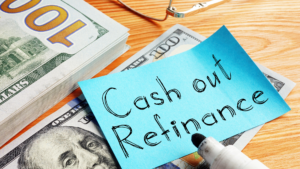What if the real headline isn’t about a dip or rebound, but a full-blown transformation? As someone who’s tracked California’s real estate tides for years, I see the Los Angeles-Orange County market less as a story of supply and demand—and more as a mirror of economic resilience, buyer adaptation, and long-overdue recalibration.
Table of Contents
ToggleWhat’s Driving the Paradox in LA’s Housing Market in 2025?
According to a detailed June 2025 analysis from U.S. News and recent housing permit data, the Los Angeles-Orange County housing market remains somewhat competitive. The median home price now stands at $905,000, up slightly from early 2024. While single-family homes attract interest in high-demand areas like Santa Monica and Brentwood, buyers are clearly price-sensitive, and homes are selling close to list price—often just 1% below.
Multifamily development is seeing turbulence: permits fell over 12% in 2024, and 2025 has started off weaker still. Meanwhile, renters in central LA neighborhoods like Koreatown and Downtown are finally seeing some relief—many are being offered 1–2 months free rent amid rising vacancies and landlord cost pressures.
Key Takeaways: What This Means for the Market
1. Interest Rates Are Cooling the Heat—But Not the Desire
At 6.85%, mortgage rates are down 2% from last year, helping hesitant buyers re-engage. But rates are still high compared to early 2020s lows. That’s slowed bidding wars, increased days on market (now 34 median), and nudged LA into a more balanced market. Price sensitivity is the new norm.
2. Construction Is Climbing, but Not Fast Enough
In 2024, over 12,000 single-family permits were approved—up 4% year-over-year—but that’s modest progress for a region still battling chronic housing shortages. Construction costs, regulatory delays, and high financing rates are keeping builders cautious.
3. Multifamily Sector Faces a Tougher Road
With multifamily permits down 28% year-over-year as of March 2025, it’s clear the economics aren’t penciling out. A $500,000-per-unit average cost and rent caps are straining developers, especially post-wildfires and amid insurance hikes. Even dense submarkets like Downtown LA are under pressure.
4. Economic Uncertainty Is Slowing Renters’ Moves
Tenants are being cautious—some relocating to more affordable inland markets or out of state entirely. The ripple effects of tariffs, high inflation, and LA’s 5.1% unemployment rate are shaping renter behavior. Renters aren’t just hunting for cheaper places—they’re rethinking where and why they live in Southern California.
What Should Buyers, Sellers, and Investors Do Now?
For Buyers:
- Get pre-approved early. With 6.85% mortgage rates and sensitive sellers, showing you’re serious gives you leverage.
- Expand your search radius. Consider neighborhoods like the San Fernando Valley or nearby counties for better value.
For Sellers:
- Price with surgical precision. Overpricing will stall offers—even in desirable zip codes.
- Be ready for negotiation. Incentives like closing credits can tip the scale in your favor.
For Investors:
- Multifamily investors should tread carefully. If you’re entering, focus on submarkets with pro-density zoning and streamlined permitting (e.g., Koreatown, DTLA).
- Watch construction costs closely. Delayed or stalled projects could mean tighter future supply—and opportunity.
Quick Explainer: What’s a “Balanced Market”?
What is a balanced housing market?
A market with 4 to 6 months of inventory—neither heavily favoring buyers nor sellers. As of early 2025, LA is hovering around 4 months, putting it slightly in sellers’ territory but more even than in past boom years.
Got Questions? Let’s Break a Few Down
Are foreclosure risks rising?
Not yet. With only 0.2% of homes in foreclosure—half the national rate—LA
are holding strong, thanks to low-rate loans from 2020–2022.
Is now a good time to invest in LA real estate?
For long-term investors with a smart financing strategy, yes. Focus on value buys in stable rental zones, and watch regulatory trends closely.
What’s driving renters out of LA?
High living Closing Costs, remote work flexibility, and more affordable options in neighboring states like Texas and Arizona are the top factors.
Final Thoughts
Yes, construction is lagging, and costs are high, but LA isn’t declining—it’s adapting. From luxury homebuyers returning post-wildfire to developers targeting denser zones, this market is recalibrating after a decade of extremes. And that creates opportunity—not just noise.
Tech Tip: Smart platforms that streamline permitting and investor underwriting could give multifamily builders the edge in tough regulatory environments. Keep an eye on proptech for solutions in 2025.

